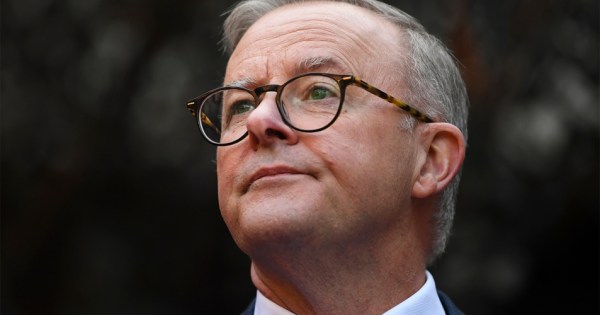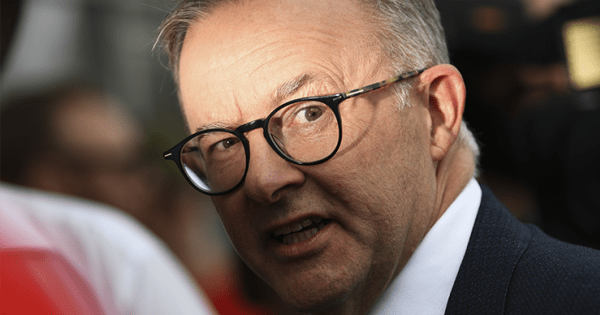Analysts don’t understand at times that even non-financial items can have a financial cost, writes Jimmy Hardy.
Of all the things said by analysts about the situation at former
asbestos group, James Hardie, the silliest has to have come from
UBS. Mark Ebbinghaus who was quoted in this morning’s Sydney Morning Herald saying the media coverage on Hardie and the inquiry was “sensationalistic”.
Well, Duohh Mark, it’s not often you get a story where the corporate
conduct is so outrageous that the mere reporting of the events and
statements at the inquiry are front page news. Move into the real
world, mate.
Mark also said, “it seems the counsel assisting is moving away from any
concept of piercing the corporate veil”. On James Hardie CEO, Peter
Macdonald he said, “people out there have a lot of respect for Peter.
He’s a nice guy, he runs the company well.”
Mark said the shortfall figure quoted Wednesday of $2.24 billion was
“an irrelevant figure”. On that Mark, I agree. Just trotted out
for effect and has no solid foundation, as Hardie said in its 117-page
defence to the Jackson Special Commission yesterday.
But I’d like to know just what Mark thinks of the conduct of Hardie and
its directors and its board in handling its asbestos claims,
liabilities and other problems. Sure, as Mark seems to be
suggesting there my be no “piercing of the corporate veil,” but in all
reality that has been done by nervy investors, large and small.
Last October Hardie shares peaked at $7.74. Yesterday they closed at
$5.54, a loss of $2.29 per share, or just over a billion dollars in
market value. That billion could be close to the amount Hardie
might have to find to make the government and claimants go away and not
launch long and expensive legal action against the company and its
directors.
Analysts don’t understand at times that even non-financial items can
have a financial cost. That’s an expensive punishment for
shareholders from the inadequate performance of the board and
management on this issue. If you like, that is the cost of the
company’s reputational risk, a point the UBS analyst, and his peers,
should have at least mentioned while defending “good-guy” Peter
Macdonald and attacking the media for its sensational reporting.
Another analyst, who would not be named, said in the same SMH article that he felt duped by Hardie not clarifying its asbestos situation.
“Hardie’s disclosure of good news was terrific. It’s a pity they couldn’t do as well on the bad news”.
Which is very good point to make and perhaps the best test of the level
of commitment a company has to transparency and governance.
They appear not to rate very highly at UBS. And while the
potential losses in Hardie are large, compared to HIH, they aren’t
anywhere as bad, as pointed out in yesterday’s sealed section.
And yet there is one important difference. HIH didn’t kill people or
sell products that did. It just insured them, poorly (and some of the
people affected by asbestos-related diseases).
James Hardie sold products which people using them in good faith either
died or have suffered terrible pain. Death is not an option, it
is a certainty with asbestos-related diseases. That makes the
Hardie situation and the conduct of the directors far worse than HIH or
Rodney Adler, or the One Tel folks for that matter.
That’s why law firm Allens, actuaries, Trowbridge and all those other
advisers potentially stand to suffer some damage to their reputations
if the findings of the Jackson Inquiry go against them.
Likewise the Hardie board and management.
We don’t execute people in this country, or inflict painful injury on
people found to break the law, so there is nothing that will equal the
pain and suffering felt by those afflicted with asbestos-related
diseases from using Hardie products or working for Hardie. And the pain
of their family and friends.
Any reputational damage would seem minor to the sort of pain and eventual death from asbestos-related diseases.
That is the big difference between Hardie and HIH.
The contrast between the behaviour of Hardie board and management and
that at CSR on the issue of asbestos is illuminating. Asbestos
has cost CSR a lot, but you can say CSR stood up and were counted in
1988 when it mattered and didn’t flee to Holland or attempt to mislead
a court, investors and shareholders or restructure their assets to
protect everything.
The submissions this week are closing statements from the various
parties. They were extreme statements of position and belief. By
their very nature they were over the top. It’s an appeal to the
judge from the various parties arguing their blackest or whitest cases.
One further point. Kevin McCann is a partner at Allens. He
is the one who was sprung in that good Christine Lacy story in the SMH a
month ago as trying to get Peter Cameron to return to the law firm from
Hardie when the inquiry is over. McCann he is on the Macquarie
Bank board.
Just as Dr Llew Edwards, a former director of Hardie is now on the
board of the foundation (the MRCF) Hardie established to handle its
claims, and he’s a director of Westpac.
The inquiry will be looking at his role on the board of Hardie before
becoming a director of the Foundation when it was formed in 2001, just
as it will be looking at the behaviour and type and quality of advice
Mr McCann’s law firm gave Hardie.
The collateral damage from this inquiry could be wide and potentially damaging to a lot of people.
CRIKEY: Meanwhile Richard Ackland has written a good column in the SMH on the legal advisers to
Hardie and their responsibilities in today’s paper: Where the line of duty falls for legal advisers
The James Hardie feeding frenzy
Subscriber email – 28 July
John Sheahan SC has joined the serious market movers club after James
Hardie shares dived 35c to $5.56 today following his final submission
to the Commission of Inquiry into the company’s attempt to dodge its
asbestos liabilities.
The media feeding frenzy against Hardie has reached fever pitch over
the past 24 hours and now the market is starting to get really worried,
especially with fresh reports that the company could be up for more
than $2 billion in additional payments.
ABC radio finance reporter Stephen Long, a former AFR industrial
reporter with lots of union contacts, has been belting into Hardie on
numerous occasions during the commission of inquiry but last night he
was joined by Matt Peacock on The 7.30 Report in a piece which
absolutely savaged the building products outfit.
Tony Jones and the Lateline crew were clearly so impressed with
Peacock’s demolition job that they ran his report again as a lead-in to
an interview with ambulance chasing plaintiff lawyer John Gordon. Read
the transcript here.
How’s this for an opening exchange:
TONY JONES: How does this compare, do you believe, to other corporate scandals in recent Australian history?
JOHN GORDON: Well, it’s hard to think of anything really to compare
with it. Most other corporate scandals – and HIH comes to mind
immediately – people lost a lot of money and there were resultant
circumstances that affected people’s livelihoods and, in some
instances, their rights to compensation and insurance recovery but this
really deals with compensation to people who are injured and dying as a
result of the use of a company’s product because of the negligence or
failure to warn of the dangers inherent in that product.
Many, many thousands of people already have contracted asbestos-related
diseases in Australia and many, many thousands more will and it’s the
concern about what is going to happen to the compensation of those
people in the future that is really wrapped up in this inquiry.
So it’s difficult to think of anything to compare. Even something as
egregious as the Bali bombing only took the lives of a couple of
hundred Australian people. This will take the lives of thousands and we
are really concerned about – what we are really concerned about is how
we’re going to ensure that those people and their families are
compensated into the future.
CRIKEY: We are not going to defend James Hardie’s deceitful
structural acrobatics for a moment, but let’s just try to put this into
some sort of perspective. HIH collapsed owing $5 billion, taxpayers
picked up more than $1 billion in liabilities, it created a public
liability crisis, there were numerous breaches of the law and hundreds
of thousands of people were affected. HIH was much worse than this
James Hardie situation.
There is still about $150 million in the Hardie fund and it is going
out at the rate of $5 million a month. No-one has yet been awarded a
payment and not received a cheque. The process is unclear but you can
be assured that Hardie will be kicking in at least another $500 million.
If Hardie was seriously doing a runner, it would have sold off its
Australian division and the various Australian luminaries sitting on
the board would have also exited. Then they would have done massive
capital returns to deplete the assets available for future claimants.
Instead, you have mates of the Prime Minister such as Donald McGauchie
joining the Hardie board only last August at a time when it was
capitalised at more than $3 billion. This gives asbestos victims
something to shoot at and you can rest assured that Hardie will write
out a big cheque and shareholders will continue to suffer.
It is worth remembering that this restructure was done with the
approval of the Carr Labor government after lobbying by Labor
heavyweights such as Stephen Loosely. That said, the book should be
thrown at the various players in this saga, especially for the
cancellation of those $1.9 billion in partly paid shares without any
reference to the NSW Supreme Court.
The ABC’s coverage last night was just a little over the top and it
should be remembered that these forecasts of $2.2 billion in total
liabilities include estimated legal fees of about $500 million – a
massive trough that plaintiff lawyers around the country, led by the
gallant John Gordon, can’t wait to access.
The News Ltd papers have been less interested than their Fairfax rivals
and we were staggered that the Herald Sun didn’t carry a single word
this morning, whilst its rival paper The Age splashed on the story.
However, The Australian did put it on the front page so we should
forget conspiracy theories about long-time James Hardie spinner Greg
Baxter influencing the coverage in his new role as chief spindoctor at
News Ltd. However, he can’t be feeling too proud of his Hardie legacy
at the moment.







Crikey is committed to hosting lively discussions. Help us keep the conversation useful, interesting and welcoming. We aim to publish comments quickly in the interest of promoting robust conversation, but we’re a small team and we deploy filters to protect against legal risk. Occasionally your comment may be held up while we review, but we’re working as fast as we can to keep the conversation rolling.
The Crikey comment section is members-only content. Please subscribe to leave a comment.
The Crikey comment section is members-only content. Please login to leave a comment.